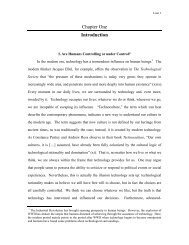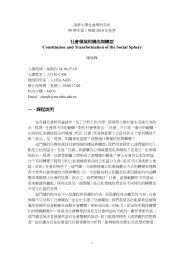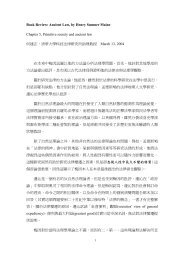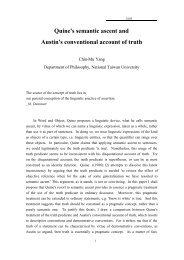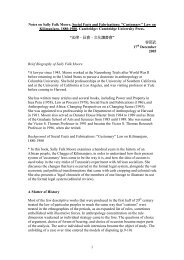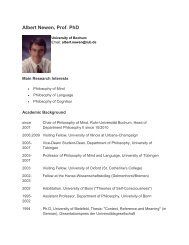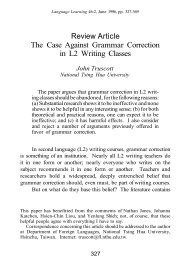Effects of Graded Texts on EFL College Students' Incidental ...
Effects of Graded Texts on EFL College Students' Incidental ...
Effects of Graded Texts on EFL College Students' Incidental ...
You also want an ePaper? Increase the reach of your titles
YUMPU automatically turns print PDFs into web optimized ePapers that Google loves.
Besides the above potential limitati<strong>on</strong>s, we suspect the following additi<strong>on</strong>al<br />
c<strong>on</strong>straints after closer scrutiny <str<strong>on</strong>g>of</str<strong>on</strong>g> text sequence in TextLadder. First, from the<br />
quantitative results <str<strong>on</strong>g>of</str<strong>on</strong>g> Ghardirian’s study, learners may have to learn 2 to 25 new<br />
words for each new text depending <strong>on</strong> the length <str<strong>on</strong>g>of</str<strong>on</strong>g> the text. The percentages <str<strong>on</strong>g>of</str<strong>on</strong>g> new<br />
words are particularly high in the first 10 to 20 texts, ranging from 8% to 16%. In<br />
other words, if a text is about 300 words l<strong>on</strong>g, a learner has to learn about 25 new<br />
words after reading them in such a short text for the first time. Nati<strong>on</strong> (2001)<br />
pointed out that “extensive reading should c<strong>on</strong>tain no more than 5% unknown running<br />
words “ (p. 150). Compared to Nati<strong>on</strong>’s positi<strong>on</strong>, the new word percentages in the<br />
first few texts in TextLadder are still higher.<br />
Sec<strong>on</strong>d, though TextLadder tried to ensure that target words in word list could<br />
appear in reading for at least five times within about 300 reading texts, there is no<br />
c<strong>on</strong>trol <strong>on</strong> when or how <str<strong>on</strong>g>of</str<strong>on</strong>g>ten learners will encounter those new words again. This<br />
therefore leads to another problem, the low frequency <str<strong>on</strong>g>of</str<strong>on</strong>g> appearance for target words<br />
will degrade incidental vocabulary learning. It may be in the tenth or twentieth text<br />
that learners finally <strong>on</strong>ce again encounter the target words read in the first text.<br />
Whether words could be acquired with such interval is questi<strong>on</strong>able. Moreover, the<br />
amount <str<strong>on</strong>g>of</str<strong>on</strong>g> exposure necessary for word acquisiti<strong>on</strong> has remained a c<strong>on</strong>troversial issue<br />
with some researchers suggesting a much higher exposure amount than five times<br />
(Horst, Cobb, & Meara, 1998; Herman, Anders<strong>on</strong>, Pears<strong>on</strong>, & Nagy, 1987).<br />
Therefore, the five-time word acquisiti<strong>on</strong> threshold determined by Textladder awaits<br />
further research verificati<strong>on</strong>.<br />
Lastly, as was admitted by Ghadirian (2002), Textladder was not tested out <strong>on</strong><br />
real learners, hence, the actual effect <str<strong>on</strong>g>of</str<strong>on</strong>g> sequenced text <strong>on</strong> vocabulary learning is left<br />
to explore.<br />
In sum, Ghadirian’s (2002) sequencing program, TextLadder, had successfully<br />
18



